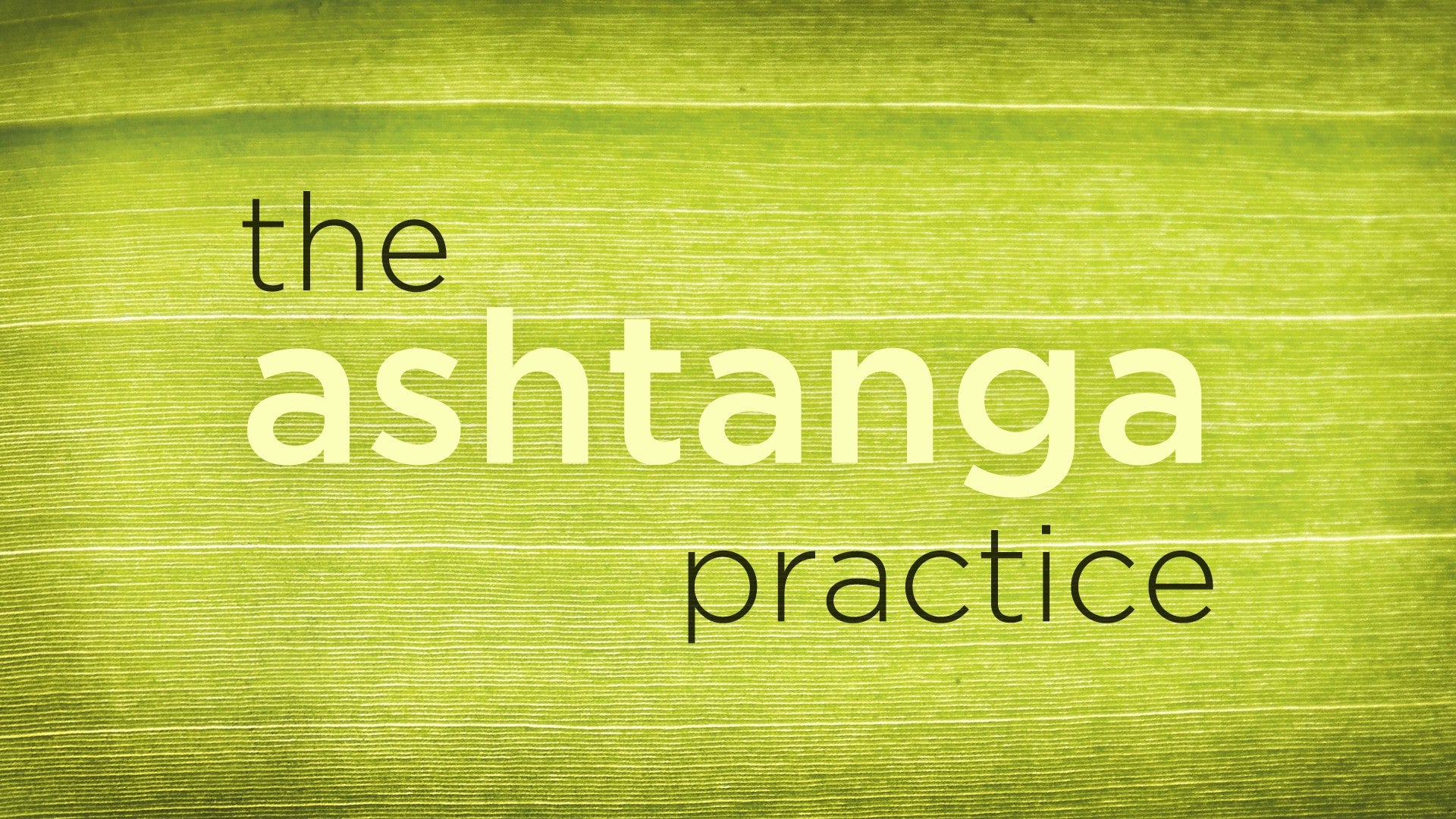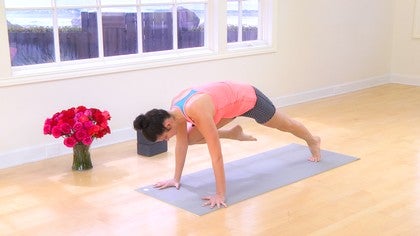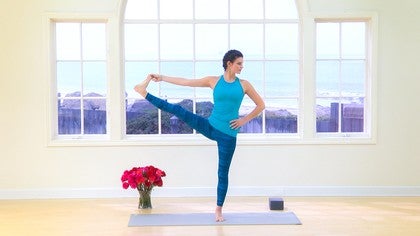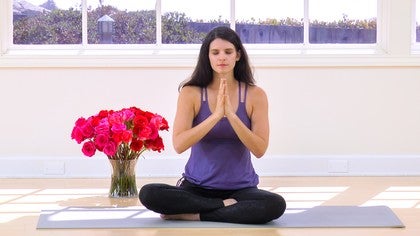Description
About This Video
Transcript
Read Full Transcript
(ocean waves) Hi. It's me again. Welcome to the jump back and jump through tutorial of the ashtanga practice. If you've ever seen anyone practice ashtanga or if you've been in an ashtanga class before, you probably know that there's a lot of jumping. Jumping forward, jumping back, jumping up, jumping down. And we're just gonna spend a few minutes together, sort of honing in on what mechanics you need to make that successful.
That being said, if you never jump forward or jump back in your ashtanga practice, you're still doing ashtanga. It is a flourish that is very fun, it looks pretty, it requires a lot of strength and power in the body. But it is not necessary. You can step back and step forward as long as you like, you can do a combination of both. And if you've been practicing with me previously, you'll know that that is how I practice as well.
So to start, we're gonna talk just briefly about chaturanga. We've done a lot of chaturanga stuff already. Elbows are in, shoulders are back. This is how you set up for a jump. You should do this work first because it's gonna make your jump back a lot more efficient and successful.
Before we actually start to practice, I want you to just have a look at your wrists. Like, hold your wrist, flop your hand around. You can feel how delicate your wrist is. Right? It's not designed to bear all of your weight.
You're going to be feeling quite a bit in your forearms and you're going to be feeling quite a bit in your triceps, your lats, and your core. But I want you to really think about your legs. So your weight is starting here in your hands and it's moving back into your feet. And that will help you be a lot nicer to your wrists. So I'm gonna start...
in a seated position, like this. Uddiyana bandha is the lower belly lock. The navel pulls in towards the spine and the space below the navel pulls in as well. Mula bandha, your root lock, the pelvic floor or your bowel and bladder control muscles, really super strong engage so that we can pull the feet in and try to touch the ankles to the feet. Or to the backs of the legs, rather.
So stay here for a moment and look at my back. I'm a little bit rounded into my back, right? This is easy. I mean, -ish. Easy-ish. (laughs) What makes this a challenge for the core is to lift up into the chest.
So this is when you start to really use mula bandha, uddiyana bandha and I'm squeezing my feet in towards the backs of my legs. Shoulders back, chest lifts. Breathe. If you start to feel slumpy, that's okay. Just... come back.
And if you tip forward, that's okay too. Come back. If you are with us during navasana, you might notice how similar they are. That is how you know where you're gonna feel the work and how you really can start to engage your legs to help you move into your chaturanga. If that felt like, eugh. Just do it a couple more times. Do it for a week. Get used to it.
Then maybe come back and join us for jumping back. If you cannot do a full chaturanga, you can still try jumping back, it just might be harder. It might feel a little more ropey. That's okay, it's practice. It's okay to feel like you're not quite getting it because you will at some point.
Your body will...get the picture. But I really encourage you to spend a lot of time in these really basic core exercises because they really help you tune the little muscles so that the big muscles don't have to do as much work. So, let's say I've done a forward bend and if you're familiar with the primary series, you know that as soon as you get into the seated series it rains vinyasas. Right, left, chaturanga. Right, left, chaturanga. So you pull in.
And I'm gonna scoot up a bit so I have a little space. You pull in, elbows in, shoulders back. Tip your weight forward, extend your legs back. If that looks... not so great, here's another way.
Pull the legs in. Squeeze in. So you make yourself a little bundle, like you're a chaturanga cannon. You're just kind of getting everything tightened up. Tip your weight forward, hands on the floor. So the set-up is the same.
And then I'm gonna lean forward, stay low. Chaturanga. So you're not shooting your legs back at the same time but you're getting that feeling of going low right away, redistributing your weight into your legs and keeping the work in your upper body and your core really stable. So that's jumping back from seated. Jumping back from standing is slightly trickier.
But gravity is our friend. So we're gonna try to use gravity to help us. So I'm gonna start in an easy forward bend. Hang out a bit. And then I come halfway up and I pull the shoulders back, palms on the floor.
Draw in with the belly, draw in with your pelvic floor. Bend your elbows, bend your knees, keep your gaze forward. Exhale, lower down. And if you come all the way down to the floor like I did, that's fine. You just work your way back up.
I don't often recommend jumping back from standing because it's a lot of work for the wrists right away. It's a very quick movement and it requires a lot of control in the belly, which is very difficult. So practice from seated first, until you get really comfortable with that and then maybe you might think, meh, I'll try it from standing. Your body's gonna tell you what's right. Please try not to jump back into plank because it will look like this.
This is all in the interest of being really nice to our joints and trying to be efficient. So if I'm jumping back and I don't use gravity, I get this big bounce. It's not terribly wrong, it's not horrible. But if you keep doing it over time, you're gonna feel wear and tear in your wrists. You're gonna feel wear and tear maybe back in your ankles.
So use gravity, with the core. Or, step back. That's also fine. So... Now I'm gonna use my blocks to bring the floor closer to me. I'm gonna put them here, about sort of half way between the floor and the mat. I'm gonna move into downward facing dog with my hands on the blocks.
And look forward because you want to see where you're going to go. Lift up in your hips, bend your knees, bounce a little bit. Imagine that your hips are the lightest things in the world. Inhale. Jump up, sit down.
Without the blocks, you do the same thing... but you have- Move these out of the way. You have a little more work of lifting up into the shoulders. Look between the hands, see where you're going to go. Woops. If you skid on your mat, that's okay.
Coming into your seated position. Another option or another way to do this from dog, which is one that I often use myself, is to look forward. Jump up, cross the feet in the air and sit down. And then you would move into your seated posture from there or whatever you're going to do next. So if jumping back is not in your bag of tricks, for this particular practice there's still lots of ways to participate in this vinyasa.
One of which... Coming back into your dog. Looking forward. Right foot comes up towards the left wrist, left foot comes up, sit down. It's the same shape of the legs that you would make if you were jumping into a seated position. Very similar to when we go back with one leg and then send the other leg back. So you're just using one leg at a time.
Now let's pause for a moment here. Think about the core and when you're jumping back and forth, you're using your hip flexors to pull the knees in or to send the legs back. So I'm going to show you a core exercise that you can do at home to help strengthen the muscles of the belly and of the abdomen, as well as work a little bit in your shoulders. So come into a high plank. Shoulders over your wrists.
Pull the shoulders back, lift up into your belly and squeeze the points of your hips together. Stay here as long as you can. From there, we're going to take one knee in to the opposite elbow. So I'll show you first and then we'll do a few rounds together. Finding plank, getting everything sorted out. Left leg up, exhale. Knee to left elbow.
Inhale, back. Knee to right elbow. Inhale, back. Pause. Take a break if you need it. Same thing... on the other side.
How's it going? It should feel a little hard. It's okay if you feel a little wobbly in your core, in your arms, in your legs. It means you're working, it means you're learning. If you do that everyday or every other day, to your favorite song, you will probably notice a difference in the belly and it will really help the transitions forward and back in ashtanga. And will also help you stablize in the shoulders for other postures, such as arm balancing and even downward facing dog. So we've looked at a few options for transitioning forward and transitioning back.
You can choose whatever works for you or you can do one of the transitions that I really like that might be familiar to you if you've been practicing with me prior to this, which is simply... Breathing. Exhale, chaturanga, jumping back. Inhale, up dog. Exhale...
downward dog. Inhale, jumping through. Exhale to your posture. Your breath is what makes this practice special. If you lose the breath because you were trying to get into that transition.
You're trying to jump back, you're trying to jump through and you've lost your rhythm, you've lost the flow and you've lost the integrity of your breath, you've lost your practice. So I really encourage you to slow it down. Just because you can do something doesn't mean that you have to. And it's okay if you can't do it, it's okay if you can't do it tomorrow, the next day, or in two years. What you can do is breathe.
And work on things one step at a time, so that you feel you are in control of your practice and that you can move the energy through your body. Which is what this practice is about. Thank you for being with me and practicing with me. Good luck. Namaste.
The Ashtanga Practice: Sarah Lowe
Comments
You need to be a subscriber to post a comment.
Please Log In or Create an Account to start your free trial.














